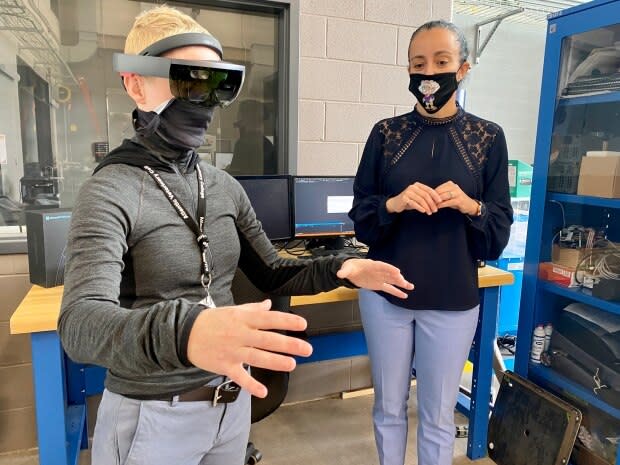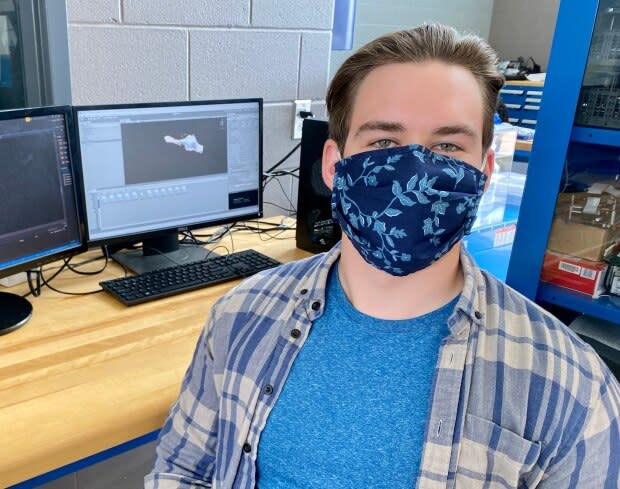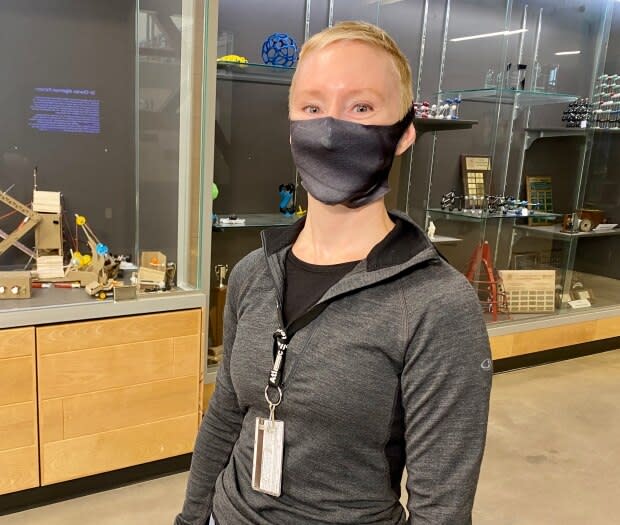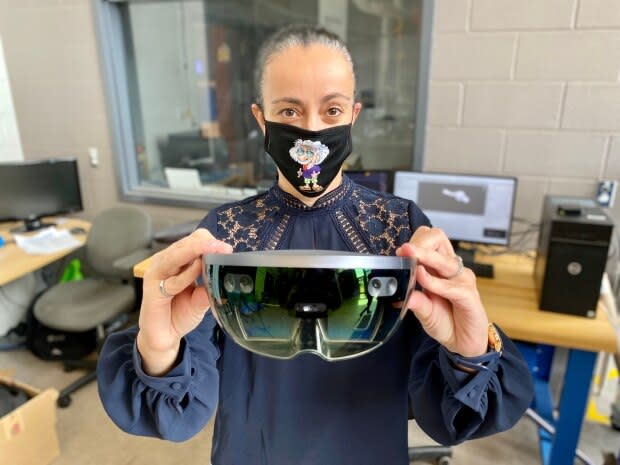UPEI lab blending engineering with biomedicine to improve health care
Research associate Nicholas Wilkie waves his arms through the air.
By using an augmented reality headset, a computer-generated dog's leg twists and moves under his motioning hands in virtual space before him.
It's just one of the projects taking place at the laboratory of mechatronics applied to biomedicine at UPEI's faculty of sustainable design engineering.
Assistant Prof. Nadja Bressan started the lab in 2018 and has been running it since. She said mechatronics is the fusion of five types of engineering: mechanics, electronics, informatics, control and systems.

Bressan is using that fusion to look at health-care solutions for people and animals. She has partnered with a co-investigator from the Atlantic Veterinary College (AVC) in Charlottetown to work on projects like the twisting dog's leg.
"It's actually an emerging field called veterinary engineering," said Dr. Cate Creighton, a veterinary anesthesiologist with AVC.
"It combines ... veterinary medicine and electromechanical engineering because they complement each other really well in developing and testing and using this technology."

Using a Microsoft HoloLens, the team is working on less invasive practices by using the the mixed-reality headset.
"It probably looks like a large pair of glasses," Wilkie said.
"It uses cameras and some little miniaturized projectors that project images into your eyes so that you can look around the physical world around us and see holograms placed against walls and other surfaces in the area."

The work they are doing will allow those in a veterinary clinic to look at a virtual representation of a dog's leg during a procedure.
Less invasive
"Part of veterinary anesthesia is monitoring animals during anesthesia and performing nerve blocks during anesthesia, both to aid the monitoring," Creighton said. "And nerve blocks we do before painful procedures so the animals experience less pain during the procedure as well as after.
"The goal of what we are doing is to improve upon existing technologies, whether it's giving us more information or information in a different way."

It can also be less invasive to look at the animal virtually — sometimes before a procedure even begins — as the non-invasive methods produce better outcomes for the patients.
"Whenever you use a tool or an instrument that has augmented reality you are actually seeing the virtual on top of the real," Bressan said.
"That is why it makes [it] so fascinating because you can see both interacting at the same time in one frame."
Technology advancing fast
Wilkie has been working on the coding for the project and said he didn't realize when he first started school how quickly things would advance.
"I didn't realize we'd be able to have something so small and so mobile that we could just carry around on our heads, like in sci-fi movies, that we could apply directly to industry and the medical applications," Wilkie said.
"It's incredible."

It is just one of the projects the two co-investigators are exploring as part of veterinary-medicine engineering. They are also working on different heart monitors for various animals — from horses to bats and snakes.
Bressan said it's exciting to see how connecting the engineering fields with health care can be adapted to improve things.
"I feel that I can play with the future," Bressan said.
"So everybody dreams about the future every day. They dream about it. I work with the future every day. We make the future."
More P.E.I. news

